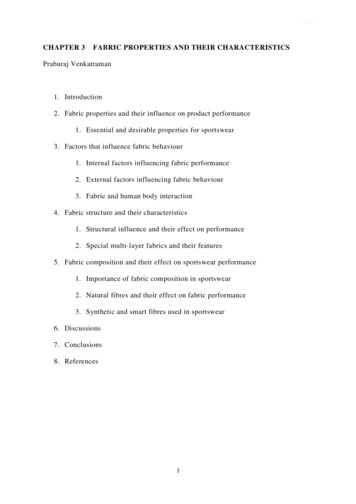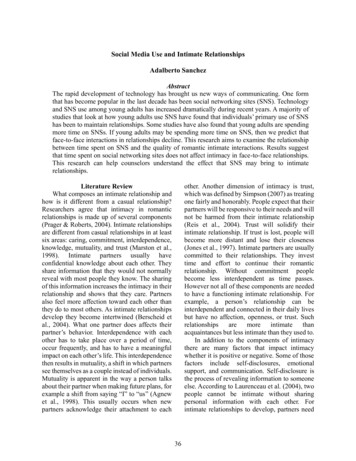
Transcription
Introduction to Borersand Their Control
What kinds of insects are borers? Moths Beetles Shoot tip moths (several families)Clear wing mothsOthers, pyralid moths, carpenter wormsMetallic wood boring beetles (Flat headed borers)Long horned beetlesBark beetlesAmbrosia beetlesSap beetlesWeevilsWasps Horn tailsSawflies
Borers Whichtrees get borers? How can sanitation reduce borerproblems? Can you control borers with reduced sitestress? How can resistant varieties be used? What is the potential for biologicalcontrol?
How do borers find stressed trees? Treesthat have been freshly wounded orare under water stress tend to give off astronger smell.Fresh cuts release volatiles. Water stress causes greater rates ofanaerobic glycolysis and ethanol production.Ethanol extracts essential oils of plants andincreases the strength of the scent
Borer Chemical Control TrunkinsecticidesEmulsifiable concentrate formulation longlasting Pyrethroids, bifenthrin (Onyx), permethrin(Astro) Systemic insecticidesImidacloprid – Kills beetle borers only Does NOT kill caterpillar borers Won’t work if vascular system is damaged
How topical insecticides kill borers As adults feed on leaf tissue Metallic wood boring beetles (Flat headed borers)As they chew their way into the tree Adults chew an egg laying niche, or matingchamber (Beetles) Larvae of many beetles bore directly into trunk of tree aftereggs are laid so they avoid insecticideLarvae chew into the bark after egg hatches(Moths)
Soil Injection
How topical insecticides kill borers As adults chew their way out of the trunkBeetles, Wasps Note:Horn tail and Sawfly wasps haveovipositors that deposit eggs beneathbark and insecticide, But adults are likely to contact enoughinsecticides to be killed as they look for anoviposition site
How systemic insecticides kill borers Materialis injected into trunk or soil. Moves through xylem and diffuses intophloem so that vascular system ispenetrated Diffusion through vascular system andprotection is poor on injured trees. Wounds may add stress to trees andcontribute to borer injury
Anatomy of a tree trunkA- Outer Bark- water proof,made of old phloemB- Inner bark – phloemC- Cambium cell layer- Growing part, makesphloem and xylemD- Sapwood -YoungXylem,Conducts water,fertilizer, and pesticidesE- Heartwood-Old Xylem, Does notconduct water,Providesstructural my.cfm
Porosity of SapwoodDescribes where in sapwood injected materialscan be taken up in transpiration stream.Ring Porous Species99% taken up by vessels beneath bark incurrent annual growth ringDiffuse or Non Porous SpeciesTaken up by vessels in most recent 3-4 growthringsSource; W. Chaney, 1999. Arbor Age 11: 25-32
Ring PorousRing PorousM. BenjaminYale ForestryDiffuse Porous
Diffuse PorousM. BenjaminYale Forestry
Non-PorousConifers havenon-poroussapwoodM. BenjaminYale Forestry
Common Ring Porous SpeciesOaksHickoriesElmsAshesHackberryBlack locustSassafrasMulberryFor more information:http://www.woodanatomy.ch/species dico.php
Ethanol extracts essential oils of plants and increases the strength of the scent. Borer Chemical Control Trunk insecticides Emulsifiable concentrate formulation long lasting Pyrethroids, bifenthrin (Onyx), permethrin (Astro) Systemic insecticides Imidacloprid - Kills beetle borers only










